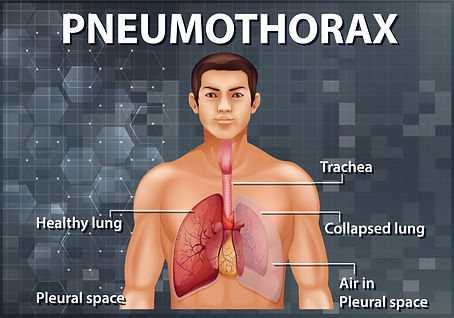
Respiratory Issues
Living in India, Specially in Delhi with the AQI being worse every year the quality of air we breathe on Daily basis is very poor. Breathing this air has caused numerous numbers of mung issues to a 1000s of common people living in these areas.
Here are multiple respiratory problems that if left unchecked can occur and cause serious damage to your organ functions:
1. Asthma and Allergy
Cause:
Asthma is a chronic inflammatory disorder of the airways characterized by reversible airflow obstruction and bronchial hyperresponsiveness. Allergies, particularly allergic rhinitis, often coexist with asthma and are triggered by environmental allergens (dust mites, pollen, mold, pet dander). Genetics, early-life respiratory infections, air pollution, and occupational exposures also contribute.
Prevention:
Avoid known allergens and irritants.
Use air purifiers and reduce indoor humidity.
Vaccinate against influenza and pneumococcal infections.
Early treatment of respiratory infections.
Smoking cessation and avoiding secondhand smoke.
Use prescribed inhaled corticosteroids and bronchodilators as directed.

2. COPD and Chronic Lung Disease
Cause:
Chronic Obstructive Pulmonary Disease (COPD) includes emphysema and chronic bronchitis. It's primarily caused by long-term exposure to tobacco smoke. Other causes include indoor air pollution (e.g., biomass fuel), occupational dust and chemicals, and genetic factors like alpha-1 antitrypsin deficiency.
Prevention:
Stop smoking and avoid exposure to tobacco smoke.
Limit exposure to air pollutants and occupational hazards.
Vaccinations (influenza, pneumococcal).
Early screening for at-risk individuals.
Pulmonary rehabilitation and regular follow-ups.
3. Lung Cancer
Cause:
Most lung cancers are linked to smoking. Other causes include radon gas exposure, asbestos, air pollution, family history, and occupational exposures (e.g., arsenic, diesel exhaust). Non-smokers can also develop lung cancer, often due to genetic mutations or long-term pollutant exposure.
Prevention:
Avoid tobacco use entirely.
Test homes for radon and ensure good ventilation.
Use protective gear if exposed to hazardous substances at work.
Reduce exposure to air pollutants.
Regular screening with low-dose CT scans for high-risk individuals (e.g., smokers over 50).

4. Lung Function Test (Pulmonary Function Testing - PFT)
Purpose:
Lung function tests measure how well the lungs are working. They assess lung volume, capacity, rates of flow, and gas exchange. Common tests include spirometry, diffusion capacity (DLCO), and body plethysmography.
Use:
Diagnosing diseases like asthma, COPD, ILD.
Monitoring disease progression and treatment response.
Pre-operative evaluation and disability assessment.
Preparation and Prevention of Complications:
Avoid heavy meals and bronchodilators before testing (as advised).
Follow proper technique and guidance.
Safe and non-invasive with minimal risk.
5. Interstitial Lung Disease (ILD)
Cause:
ILDs are a group of disorders that cause scarring (fibrosis) of lung tissue. Causes include autoimmune diseases (e.g., rheumatoid arthritis), environmental exposures (e.g., asbestos, silica), medications, radiation therapy, and idiopathic forms like Idiopathic Pulmonary Fibrosis (IPF).
Prevention:
Avoid exposure to known lung irritants.
Use protective respiratory gear when necessary.
Control underlying autoimmune diseases.
Stop smoking.
Regular screening if at risk or occupationally exposed.

6. Bronchoscopy and Interventional PulmonologyBronchoscopy:A procedure that allows visualization of the airways using a bronchoscope. It helps diagnose infections, tumors, bleeding, and interstitial diseases. It can also retrieve foreign bodies or collect biopsies.Interventional Pulmonology:A subspecialty using advanced procedures like:Endobronchial ultrasound (EBUS)CryotherapyAirway stentingLung volume reductionPleuroscopyPrevention of Complications:Pre-procedure evaluation and preparation (including coagulation profile).Use of sterile techniques.Monitoring and management of complications like bleeding or pneumothorax.Proper patient selection and procedural expertise.